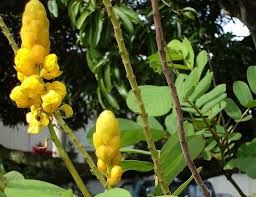
VCO is now getting global reputation as the healthiest and versatile oil in the world. The Philippines is one of the best sources of virgin coconut oil and it's popularity in the country is legendary. Although not an herb, we decided to make an article about VCO because of the growing interest on the oil and after receiving several inquiries from our visitors.
Virgin coconut oil and regular coconut oil is rich in Lauric Acid, an essential fatty acid that is only found in high concentrations in mother's milk. When taken internally, Lauric Acid turns into a compound known as Monolaurin.
It is this compound that is believed to fight viral pathogens that protects the body from bacteria, viruses and infections from parasites. Coconut oil also causes the metabolic rate to increase, hence helps reduce weight and is safe and beneficial for diabetics.
For many years, coconut oil has been discredited (specially in the west) because of it's high saturated fat content. But recent studies have shown that not all saturated fats are the same.
The medium chain triglycerides of which virgin coconut oil is classified, does not elevate LDL (the bad cholesterol) in our body compared to other polyunsaturated vegetable oils such as canola and sunflower oil which is widely produced in the west.
How Virgin Coconut Oil (VCO) is Made
First, the husk and the shell is removed from fresh coconuts, then the meat of the coconut is shredded -a process called "Wet Milled", then the meat is "Cold Pressed" to get the coconut milk without any chemicals. The milk is then fermented in containers for a day or two. After which, oil is produced.
This oil is carefully filtered and separated from the curd. You now have what is called, virgin coconut oil. A more modern way of separating the oil from the curd is through centrifugal force.
The second method of producing virgin coconut oil (VCO) is using quick dried coconut meat and then processed in the same way. But the preferred manner by most is still the "Wet Milled" process.
Difference between Virgin Coconut Oil (VCO) and Regular (RBD) Coconut Oil.
RBD stands for Refined, Bleached, and Deodorized. Ordinary coconut oil usually comes from copra - coconut meat that is dried by either smoke, kiln or placing under the sun. Because the process itself is not sanitized, the oil must be further refined.
To get more oil from copra, chemicals are usually used. RBD process is required to make the oil clear, odor free and tasteless. This procedure also removes the anti-oxidant and other properties of the oil. Some coconut oils are also hydrogenated which increases the serum cholesterol levels and thus is bad for the heart.
While virgin coconut oil, being pure, unadulterated and unhydrogenated retains it's pleasant coconut taste, smell and all the health benefits of coconut oil.
Much research still has to be done on the benefits of virgin coconut oil but preliminary findings and anecdotal reports are very promising. This may well be the much needed medicine to restore to health the ailing Philippine coconut industry.







 RIYADH: Two people died and one person was injured following torrential rains and hailstorms that brought Riyadh to its knees on
RIYADH: Two people died and one person was injured following torrential rains and hailstorms that brought Riyadh to its knees on 
